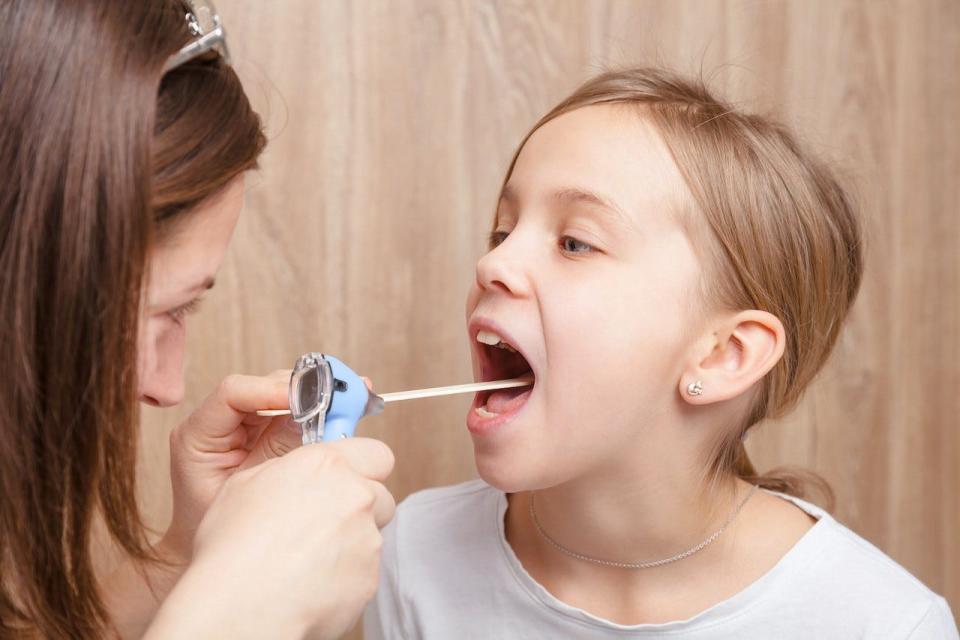Strep throat season is here. Know the symptoms, and how to protect yourself
That tickle in your throat could be much more than just a minor irritation. It could be the first signs of a streptococcal — or strep throat — infection, and if left unchecked, that little tickle could become a major health issue.
"CDC estimates, in the most recent five years, approximately 14,000 to 25,000 cases of invasive group A strep disease occur each year in the United States," read a portion of the Centers for Disease Control and Prevention's website. "In the last five years between 1,500 and 2,300 people die annually due to invasive group A strep disease."
Strep infections transmit like the flu, and like the flu, exposures are most prevalent in the winter and spring months.
How does a strep throat feel, and what it look like?
The Pennsylvania Department of Health said strep throat symptoms can spread and intensify quickly.
"A person with invasive strep disease can become very ill within 12 to 24 hours," read a portion of the health department's website. Early signs and symptoms may include high fever; severe muscle aches/pain; localized muscle tenderness; redness at the site of a wound; dizziness; confusion; and a flat rash over large areas of the body."
'Sickest person in Ireland' had strep: Levittown man, 21, stricken on family trip, fights for his life in Dublin ICU as 'sickest person in Ireland'
The CDC also listed additional streptococcal infection symptoms on a separate website.
"In general, strep throat is a mild disease, but it can be very painful," read the other CDC website on strep throat. "Common symptoms may include: pain when swallowing; sore throat that started very quickly and may look red; red and swollen tonsils; white patches or streaks of pus on the tonsils; tiny, red spots on the roof of the mouth, called petechiae; and swollen lymph nodes in the front of the neck."

Strep A vs. Strep B
There are two types of Streptococcal infections: Group A and Group B.
Group A strep has a specific carbohydrate attached to the surface of the bacteria. Group B Strep is a different bacteria with a different carbohydrate on its surface and causes different infections; it is not a common cause of strep throat.
Another look: strep throat breakdown: How do you get strep throat? Watch out for these early signs of the highly contagious illness
Group B streptococcus can cause serious medical complications in people of all ages, but especially newborns, the CDC reports. The bacteria, which mostly lives in the gastrointestinal and genital tracts, causes GBS disease.
How to get rid of strep throat: What are the treatments?
Strep throat is treated with antibiotics. Patients should start to feel marked improvement in their symptoms within 48 hours of taking antibiotics.
Medication will both limit spread of the disease to others and prevent further complications such as rheumatic fever.
The Mayo Clinic also advises taking over-the-counter pain medications such as aspirin or ibuprofen to relieve symptoms, as well as getting plenty of rest, hydrating, gargling with warm salt water, eating soothing foods, and using a humidifier.
How do I protect myself from a streptococcal infection?
The CDC said people should follow a set of daily hygiene habits to best protect themselves from a strep throat infection.
"Many daily healthy habits can help prevent infections," the CDC noted on its website. "Cover your mouth and nose with a tissue when you cough or sneeze, and promptly discard the used tissue; cough or sneeze into your upper sleeve or elbow, not your hands, if you don’t have a tissue; wash your hands often with soap and water for at least 20 seconds, and use an alcohol-based hand rub if soap and water are not available; and wash glasses, utensils, and plates after someone who is sick uses them."
This article originally appeared on Bucks County Courier Times: Do I have strep throat? Here are symptoms and treatment

